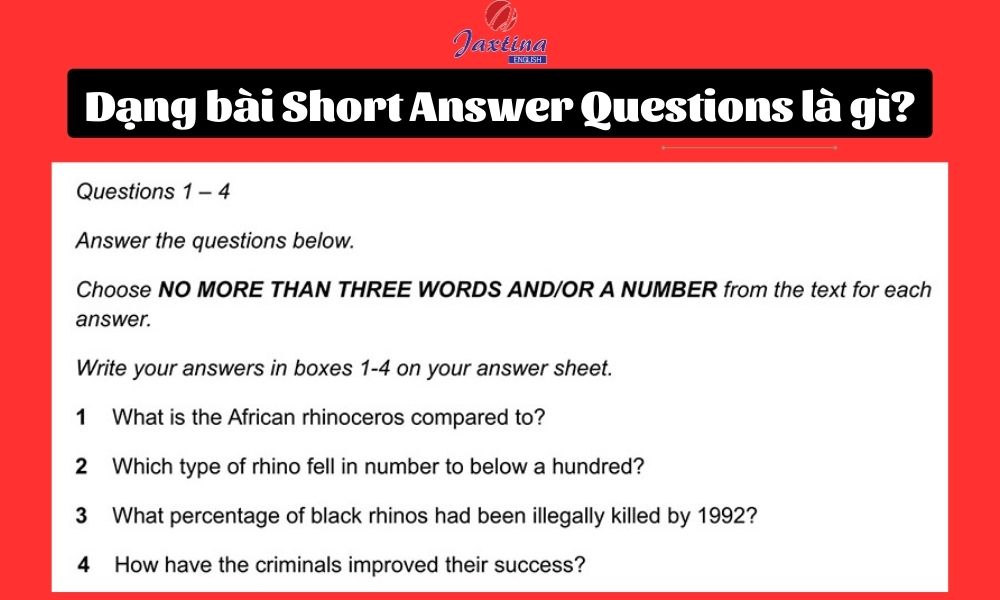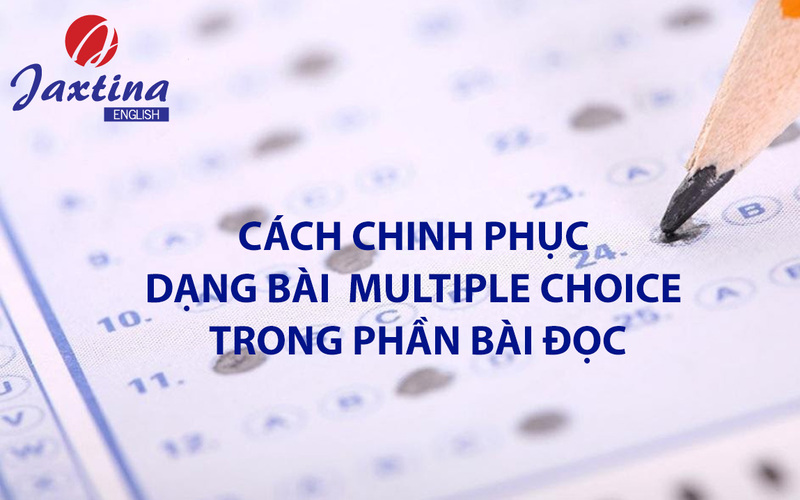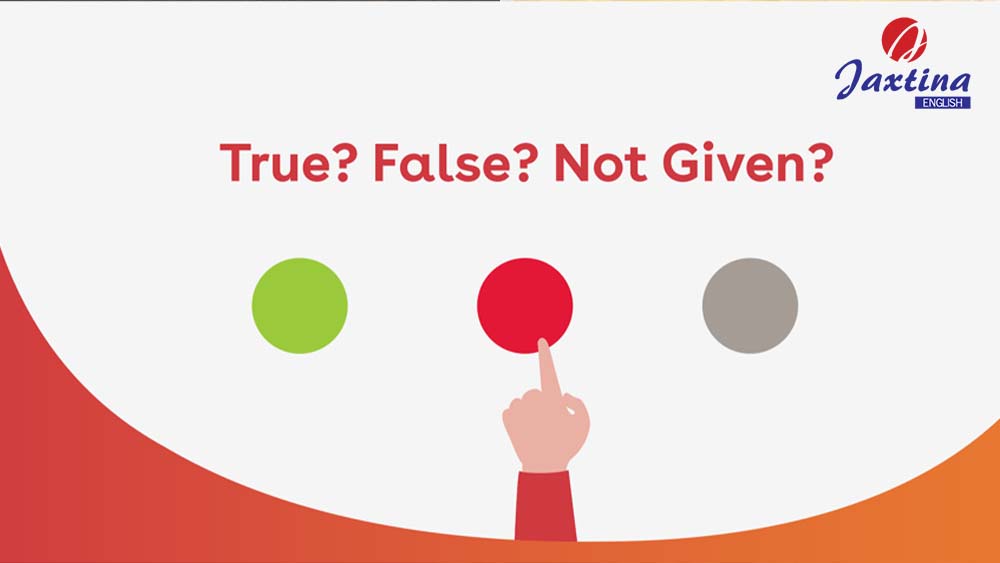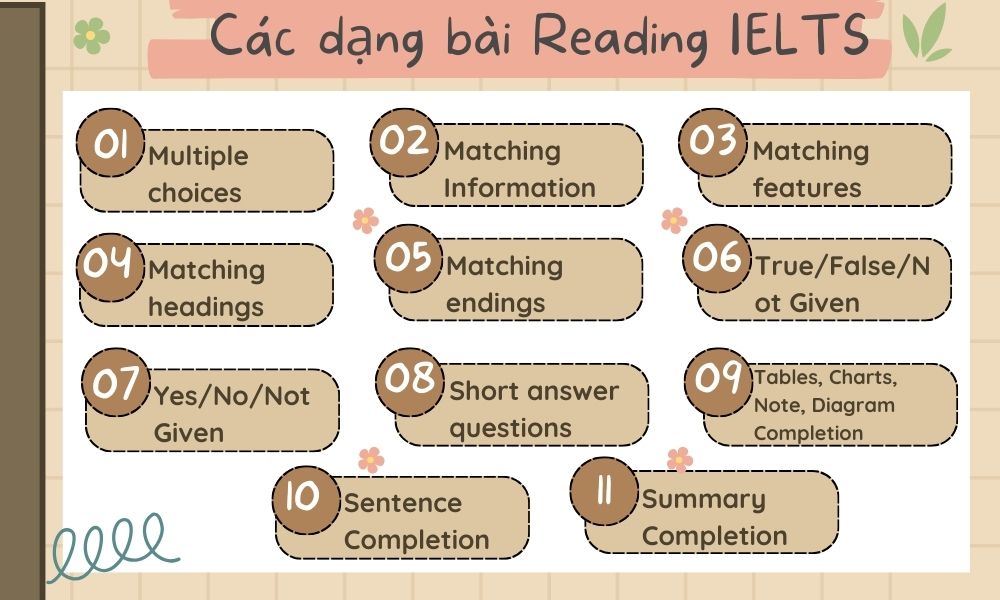4 bước làm dạng bài Short Answer Questions IELTS Reading
Cách làm dạng bài Summary Completion trong IELTS Reading
Summary Completion IELTS Reading (Hoàn thành đoạn tóm tắt) là một dạng bài tập tưởng chừng như rất dễ ăn điểm nhưng nếu không nắm chắc chiến thuật làm dạng bài này thì lại rất dễ mất điểm. Nên hôm nay trung tâm Jaxtina sẽ chia sẻ về cách làm dạng bài summary completion thông qua nội dung bài học luyện thi IELTS sau đây. Xem ngay nhé!
Nội dung bài viết
1. Giới thiệu dạng bài Summary Completion IELTS Reading
Summary Completion là dạng bài IELTS Reading mà thí sinh được giao một đoạn tóm tắt toàn bộ hoặc một phần của bài đọc với nhiều chỗ còn trống, và phải tìm từ còn thiếu để điền vào các chỗ trống đó. Mục tiêu của dạng bài này là để kiểm tra kỹ năng đọc hiểu nội dung chính, khả năng chọn lọc thông tin, xác định keywords và vốn từ đồng nghĩa của bạn.
Dạng bài này có 2 loại bài tập chính:
- Tự tìm thông tin trong bài đọc để điền vào chỗ trống
- Điền vào chỗ trống với các từ được cho sẵn
Tìm Hiểu Thêm: Luyện đề IELTS
2. Chiến thuật làm dạng bài Summary Completion
Sau đây là cách làm dạng bài Summary Completion trong bài thi IELTS Reading
- Bước 1: Đọc kỹ yêu cầu đề bài, đặc biệt lưu ý đến giới hạn số lượng từ hoặc số cần điền.
- Bước 2: Đọc cẩn thận đoạn tóm tắt, xác định và gạch chân keywords để nắm được nội dung chính.
- Bước 3: Xác định loại từ cần điền (danh từ, động từ, tính từ, ….) và cố gắng đoán trước đáp án.
- Bước 4: Quay lại văn bản và dò tìm thông tin theo nội dung của đoạn tóm tắt. Ở dạng bài tập này, câu trả lời thường xuất hiện trong văn bản theo thứ tự câu hỏi. (Bạn không nên dành quá nhiều thời gian cho một câu hỏi, nếu chưa tìm được đáp án thì hãy chuyển sang câu hỏi khác dễ hơn và quay trở lại câu hỏi khó đó sau.)
- Bước 5: Tìm từ đồng nghĩa và paraphrase của keywords trong văn bản. Các bài đọc sẽ sử dụng từ đồng nghĩa và paraphrase chứ không dùng cùng keywords với đoạn tóm tắt để tăng độ khó nên bạn hãy chú ý nhé!
- Bước 6: Kiểm tra lại đáp án để đảm bảo câu trả lời của bạn đáp ứng yêu cầu đề bài, đúng chính tả và ngữ pháp.
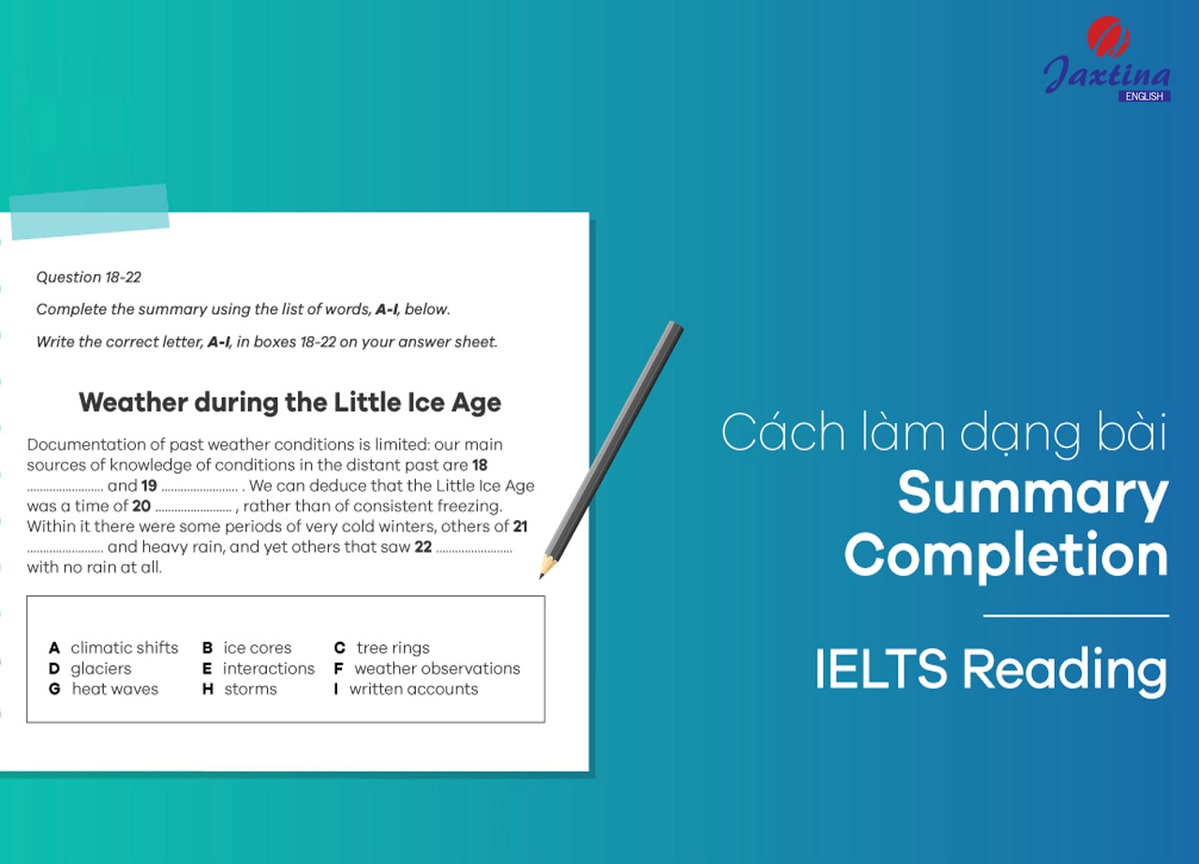
Cách làm dạng bài summary completion
Đọc Thêm: Cách luyện Reading IELTS hiệu quả
3. Một số sai lầm thường gặp khi làm Summary Completion
1. Tốn thời gian để đọc và cố gắng hiểu cả văn bản.
2. Mất thời gian để tìm từ giống hệt với keyword trong đoạn tóm tắt.
3. Từ cần điền không đúng ngữ pháp với câu.
Khám Phá Thêm: True false not given IELTS Reading
4. Bài tập vận dụng cách làm dạng bài summary completion
Hãy thử áp dụng chiến thuật trên để làm bài dưới đây nhé!
MUSIC AND THE EMOTIONS
Neuroscientist Jonah Lehrer considers the emotional power of music
Why does music make us feel? On the one hand, music is a purely abstract art form, devoid of language or explicit ideas. And yet, even though music says little, it still manages to touch us deeply. When listening to our favorite songs, our body betrays all the symptoms of emotional arousal. The pupils in our eyes dilate our pulse and blood pressure rises, the electrical conductance of our skin is lowered, and the cerebellum, a brain region associated with bodily movement, becomes strangely active. Blood is even re-directed to the muscles in our legs. In other words, sound stirs us at our biological roots.
A recent paper in Nature Neuroscience by a research team in Montreal, Canada, marks an important step in revealing the precise underpinnings of the potent pleasurable stimulus’ that is music. Although the study involves plenty of fancy technology, including functional magnetic resonance imaging (fMRI) and ligand-based positron emission tomography (PET) scanning, the experiment itself was rather straightforward. After screening 217 individuals who responded to advertisements requesting people who experience ‘chills’ to instrumental music, the scientists narrowed down the subject pool to ten. They then asked the subjects to bring in their playlist of favorite songs – virtually every genre was represented, from techno to tango – and played them the music while their brain activity was monitored. Because the scientists were combining methodologies (PET and fMRI), they were able to obtain an impressively exact and detailed portrait of music in the brain. The first thing they discovered is that music triggers the production of dopamine – a chemical with a key role in setting people’s moods – by the neurons (nerve cells) in both the dorsal and ventral regions of the brain. As these two regions have long been linked with the experience of pleasure, this finding isn’t particularly surprising.
What is rather more significant is the finding that the dopamine neurons in the caudate – a region of the brain involved in learning stimulus-response associations, and in anticipating food and other ‘reward’ stimuli – were at their most active around 15 seconds before the participants’ favorite moments in the music. The researchers call this the ‘anticipatory phase’ and argue that the purpose of this activity is to help us predict the arrival of our favorite part. The question, of course, is what all these dopamine neurons are up to. Why are they so active in the period preceding the acoustic climax? After all, we typically associate surges of dopamine with pleasure, with the processing of actual rewards. And yet, this cluster of cells is most active when the ‘chills’ have yet to arrive, when the melodic pattern is still unresolved.
One way to answer the question is to look at the music and not the neurons. While music can often seem (at least to the outsider) like a labyrinth of intricate patterns, it turns out that the most important part of every song or symphony is when the patterns break down, when the sound becomes unpredictable. If the music is too obvious, it is annoyingly boring, like an alarm clock. Numerous studies, after all, have demonstrated that dopamine neurons quickly adapt to predictable rewards. If we know what’s going to happen next, then we don’t get excited. This is why composers often introduce a keynote at the beginning of a song, spend most of the rest of the piece in the studious avoidance of the pattern, and then finally repeat it only at the end. The longer we are denied the pattern we expect, the greater the emotional release when the pattern returns, safe and sound.
To demonstrate this psychological principle, the musicologist Leonard Meyer, in his classic book Emotion and Meaning in Music (1956), analyzed the 5th movement of Beethoven’s String Quartet in C-sharp minor, Op. 131. Meyer wanted to show how music is defined by its flirtation with – but not submission to – our expectations of order. Meyer dissected 50 measures (bars) of the masterpiece, showing how Beethoven begins with a clear statement of a rhythmic and harmonic pattern and then, in an ingenious tonal dance, carefully holds off repeating it. What Beethoven does instead is suggest variations of the pattern. He wants to preserve an element of uncertainty in his music, making our brains beg for the one chord he refuses to give us. Beethoven saves that chord for the end.
According to Meyer, it is the suspenseful tension of music, arising out of our unfulfilled expectations, that is the source of the music’s feeling. While earlier theories of music focused on the way a sound can refer to the real world of images and experiences – its ‘connotative’ meaning – Meyer argued that the emotions we find in music come from the unfolding events of the music itself. This ‘embodied meaning’ arises from the patterns the symphony invokes and then ignores. It is this uncertainty that triggers the surge of dopamine in the caudate, as we struggle to figure out what will happen next. We can predict some of the notes, but we can’t predict them all, and that is what keeps us listening, waiting expectantly for our reward, for the pattern to be completed.
Question 1-5
Complete the summary below.
Choose NO MORE THAN TWO WORDS from the passage for each answer.
Write your answers in boxes 1-5 on your answer sheet.
The Montreal Study
Participants, who were recruited for the study through advertisements, had their brain activity monitored while listening to their favorite music. It was noted that the music stimulated the brain’s neurons to release a substance called (1) _______________ in two of the parts of the brain that are associated with feeling (2) _______________
Researchers also observed that the neurons in the area of the brain called the (3) _______________ were particularly active just before the participants’ favorite moments in the music – the period known as the (4) _______________. Activity in this part of the brain is associated with the expectation of ‘reward’ stimuli such as (5) _______________
Xem đáp án
Một số từ vựng đáng chú ý
|
Nguồn bài đọc tham khảo từ: Reading Passage 3 (Test 3)-IELTS Cambridge 12
Qua bài viết trên đây, Jaxtina English Center đã chia sẻ tới bạn cách làm dạng bài Summary Completion IELTS Reading (Hoàn thành đoạn tóm tắt). Mong rằng bài viết này sẽ giúp bạn chinh phục được dạng bài IELTS này.
Đừng Bỏ Qua:

Đơn giản hoá việc học tiếng Anh

Tiên phong đào tạo
tiếng Anh toàn diện 4 kỹ năng.


